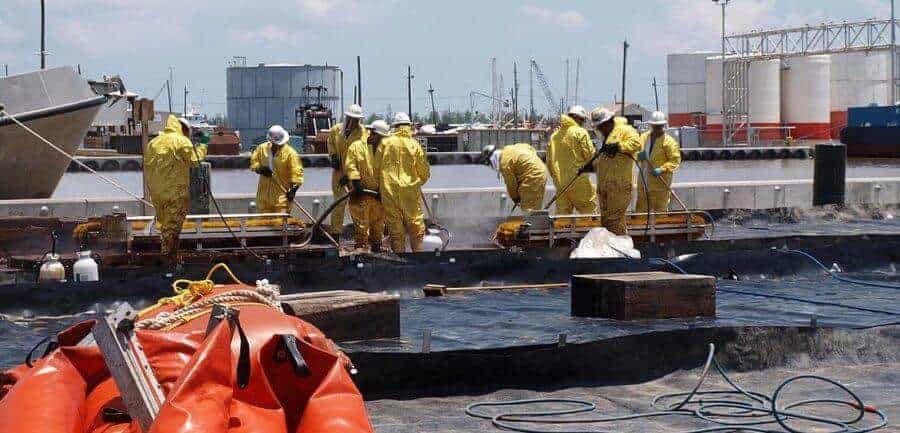Workers who were likely exposed to dispersants while cleaning up the 2010 Deepwater Horizon oil spill experienced a range of health symptoms including cough and wheeze, and skin and eye irritation, according to scientists at the National Institutes of Health (NIH). The study appeared online Sept. 15 in Environmental Health Perspectives and is the first research to examine dispersant-related health symptoms in humans.
Oil dispersants are a blend of chemical compounds used to break down oil slicks into smaller drops of oil, making them easily degraded by natural processes or diluted by large volumes of water. The study estimated the likelihood of exposure to dispersants, based on the types of jobs the workers did and where. Individuals who handled dispersants, worked near where dispersants were being applied, or had contact with dispersant equipment reported the symptoms they experienced during oil spill cleanup as part of the Gulf Long-term Follow-up (GuLF) STUDY.
The research team found that workers exposed to dispersants were more likely to experience certain symptoms — cough, wheeze, tightness in the chest, and burning in the eyes, nose, throat, or lungs — than those who were not exposed to dispersants.
Dale Sandler, Ph.D., the lead GuLF STUDY researcher at the National Institute of Environmental Health Sciences (NIEHS), part of NIH, said the findings only apply to workers involved in the cleanup effort and not the general public.
“The health effects that we see in the workers don’t necessarily apply to the community at large, although many of the workers live in affected areas,” Sandler said.
After the oil spill, two chemical dispersants, Corexit EC9500A or Corexit EC9527A, were used in some areas where oil was present. Sandler said since it was the first time oil dispersants had been used on such a large scale, it was important to examine the possible health effects. Most of the previous research on dispersants focused on how well the compounds dispersed oil and the potential environmental impacts. Several small animal studies that tested the chemicals in dispersants suggested some of the compounds were toxic.
One of the challenges the researchers faced was distinguishing whether the effects they saw were associated with the dispersants or petroleum products from the spill. Sandler said the scientists were able to consider both exposures and isolate the effects associated with the dispersants.
The researchers also considered the association between having been exposed to the dispersants during cleanup work and having current symptoms at the time the workers joined the study. Many of those who reported symptoms while they were involved in the oil spill response and cleanup, no longer had them one to three years later when the telephone interviews were conducted. Sandler explained that these findings were consistent with a short-term effect of dispersants on health symptoms. She noted, however, that a small percentage of oil spill workers were still having these symptoms.
“While symptoms are not disease, many people who worked on the oil spill underwent a stressful experience,” said NIEHS Director Linda Birnbaum, Ph.D. “Some of them are continuing to not feel well, and we don’t know what factors are contributing to it. The ongoing GuLF STUDY research is important for shedding light on the potential health impacts associated with an oil spill.”
GuLF STUDY participants completed telephone interviews during enrollment, a subsequent home visit that included medical assessments and collecting biological samples, and one follow-up telephone interview. A new follow-up interview is scheduled to start fall 2017. The data used in this study came from enrollment interviews with 31,609 English or Spanish-speaking persons who were involved in oil spill response or cleanup.


